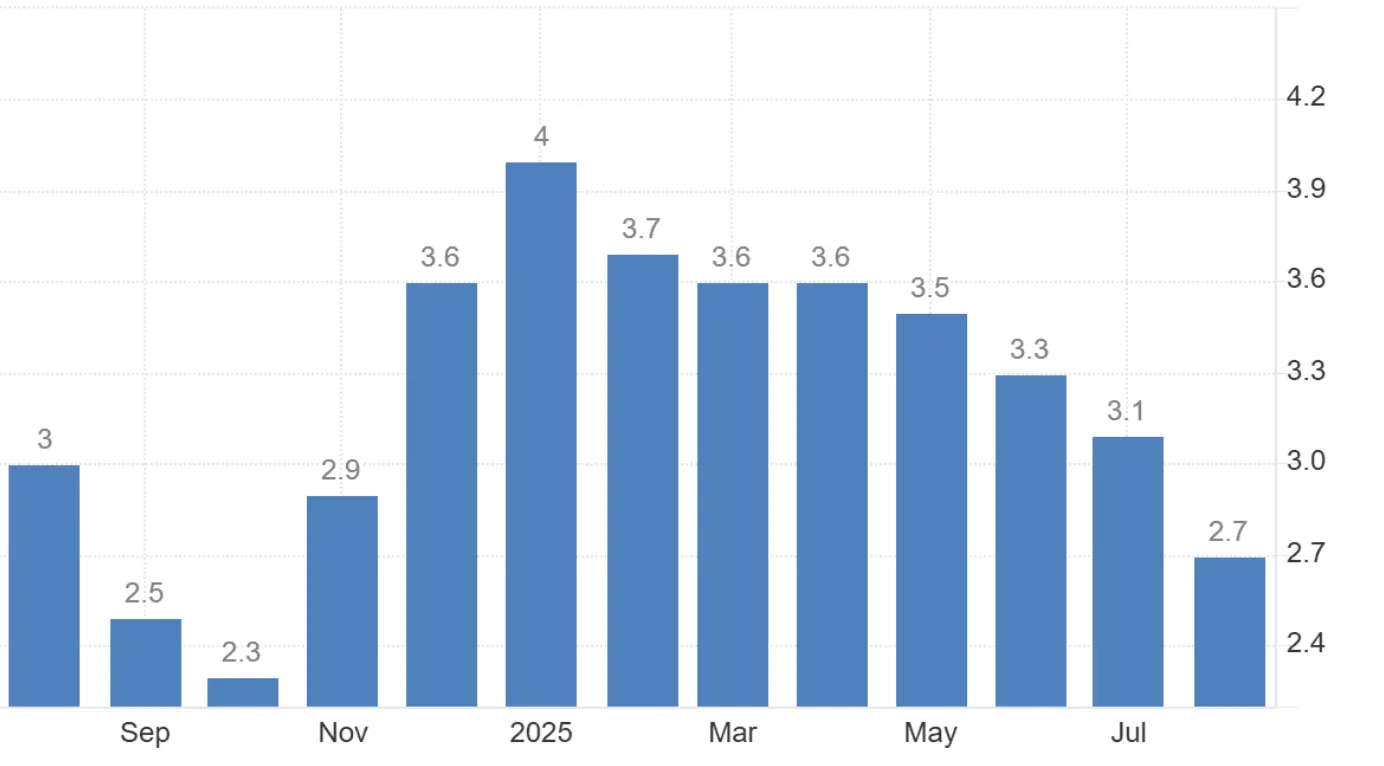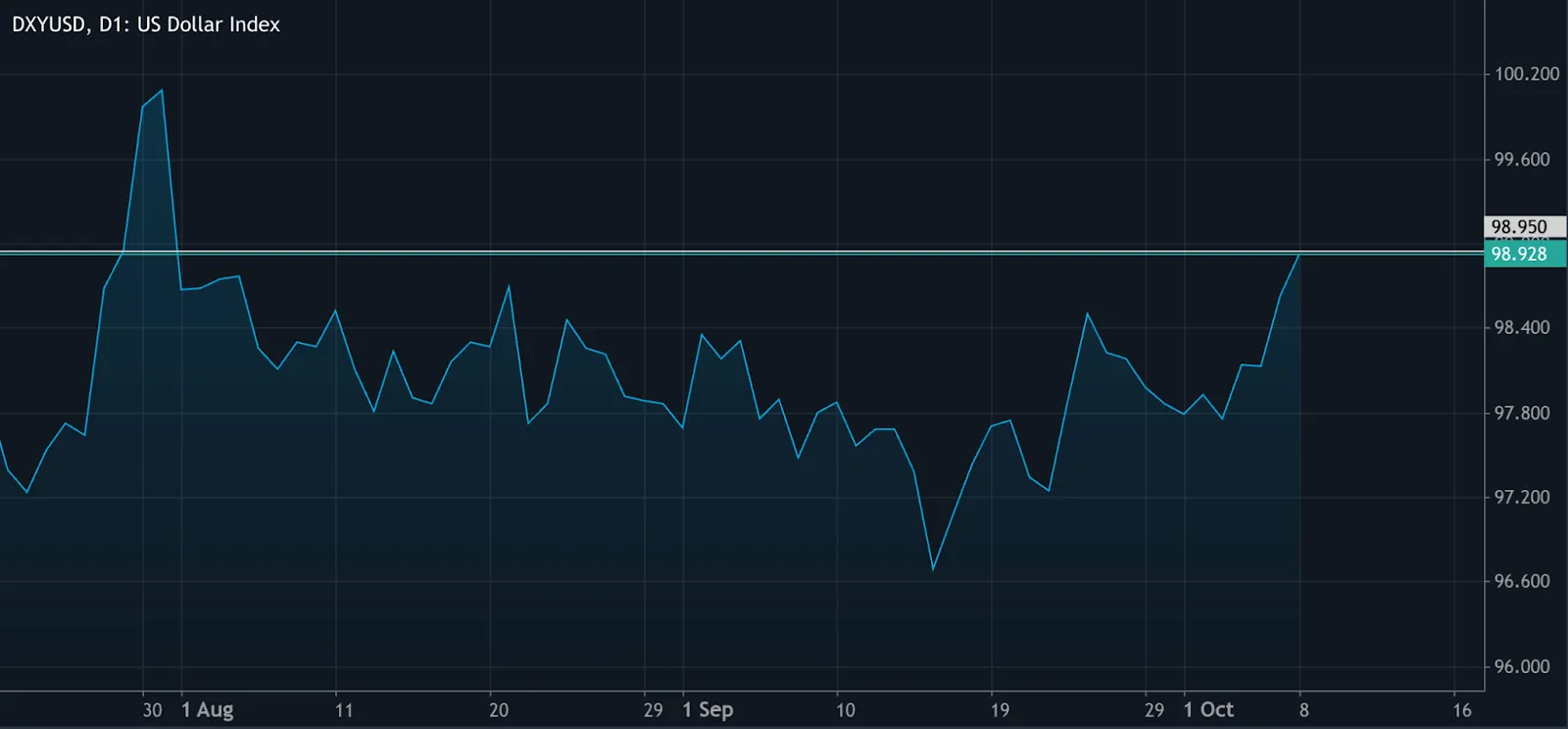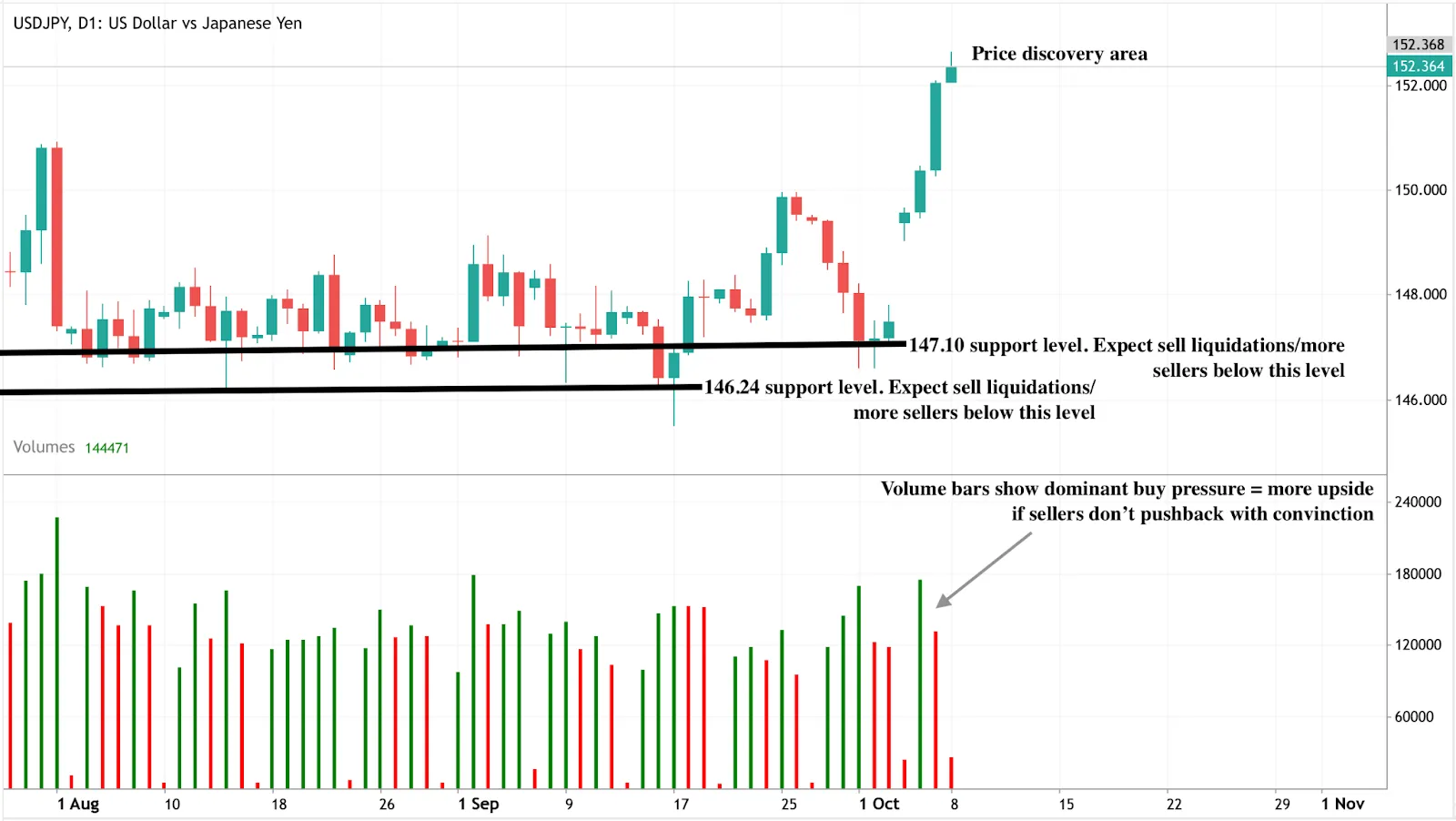¿La nueva era de estímulos de Japón está alimentando el próximo auge mundial del carry trade?

Sí, la política fiscal expansiva de Japón y sus tasas de interés ultrabajas podrían reactivar el carry trade mundial, según los analistas. Con el yen cayendo a mínimos de siete meses y el USD/JPY con escape por encima de 151, los operadores vuelven a pedir prestado el yen para perseguir rentabilidades más altas bienes. Tokio se enfrenta ahora a una presión creciente para defender su moneda, ya que los mercados consideran el 155 como el próximo hito. A menos que el Banco de Japón (BoJ) adopte una política más restrictiva o intervenga directamente, las operaciones financiadas con yenes podrían seguir alimentando el apetito mundial por el riesgo hasta 2025.
Conclusiones clave
- El USD/JPY alcanza un máximo de siete meses por encima de los 151,00 en medio de una renovada debilidad del yen y un sentimiento global de riesgo.
- Las políticas favorables al estímulo de Sanae Takaichi aumentan las expectativas de un gasto fiscal a gran escala, lo que retrasa el endurecimiento del BoJ.
- La actividad de carry trade resurge, ya que los inversores piden prestado yenes a bajo precio para invertir en activos de mayor rendimiento en el extranjero.
- Tokio advierte de una volatilidad excesiva, pero los mercados siguen poniendo a prueba el umbral de intervención de Japón.
- El par USD/JPY podría poner a prueba el 155, a menos que se produzca un cambio brusco en el Banco de Japón o una intervención gubernamental coordinada.
El estímulo fiscal de Japón en 2025 y la caída del yen
El cambio político de Japón está ejerciendo una nueva presión a la baja sobre el yen. Tras la elección de Sanae Takaichi como nueva líder del Partido Liberal Democrático (PLD), los inversores esperan que su gobierno aumente el gasto público para apoyar el crecimiento.
Si bien esta estrategia podría estimular la economía, plantea problemas de sostenibilidad fiscal y complica los esfuerzos del Banco de Japón para controlar la inflación. La inflación de Japón se situó en el 2,7% en agosto, aún por encima del objetivo del 2%, lo que sugiere que la política debería mantenerse ajustada.
Tasa de inflación de Japón

Sin embargo, las expectativas van en la dirección opuesta: los mercados ahora solo ven un 26% de probabilidades de que el BoJ suba los tipos antes del 30 de octubre, frente al 60% anterior a la victoria de Takaichi.
Tasas de interés del Banco de Japón

Este cambio de perspectiva ha hecho que las inversiones denominadas en yenes sean menos atractivas y ha impulsado las salidas de capital hacia los mercados de mayor rendimiento, lo que ha acelerado la caída de la moneda.
El yen japonés centra la atención en las operaciones mientras Takaichi sacude los mercados
El carry trade vuelve a estar en el centro de la atención del mercado. Con los tipos japoneses anclados cerca de cero, los operadores están tomando yenes en préstamo para comprar activos en economías con rendimientos más altos, como EE. UU. o Australia.
Esta estrategia florece cuando es global riesgo el apetito es alto y el repunte de la renta variable de 2025 ha proporcionado el telón de fondo perfecto. El Nasdaq, el S&P 500 y el Nikkei 225 de Japón alcanzaron recientemente nuevos máximos históricos, lo que refleja la amplia confianza de los inversores. Ese mismo optimismo ha erosionado la demanda del yen, que es un refugio seguro, reforzando su papel como la divisa de financiación más importante del mundo.
La dinámica refleja el auge del carry trade de mediados de la década de 2000, cuando la debilidad del yen impulsó la inversión especulativa en todo el mundo, hasta que un repentino cambio de política del Banco de Japón invirtió la tendencia. Sin embargo, por ahora, la política monetaria acomodaticia y la expansión fiscal de Japón mantienen viva la estrategia.
Perspectiva bursátil: las operaciones carry son rentables cuando la volatilidad es baja y los diferenciales de los tipos de interés son amplios, pero pueden relajarse violentamente cuando la confianza cambia. Obtenga más información sobre cómo operar en mercados turbulentos en nuestro guía sobre la volatilidad del mercado.
El dilema de Tokio: intervenir o tolerar la caída
El Ministerio de Finanzas de Japón está atrapado en un aprieto conocido. Con el par USD/JPY ahora por encima de los 151, los operadores están atentos a las señales de una intervención gubernamental, que históricamente se ha activado cuando el par se acerca a los 150-152.
El ministro de Finanzas, Katsunobu Kato, ha reiterado la disposición de Japón a contrarrestar la «volatilidad excesiva», pero el mercado sigue siendo escéptico. Las intervenciones son costosas y de corta duración a menos que estén respaldadas por una alineación de la política monetaria. Dado que la administración de Takaichi se inclina por la expansión fiscal, es poco probable que las advertencias verbales por sí solas detengan la venta del yen.
Esto deja a Tokio con dos opciones: intervenir directamente, con el riesgo de tener un éxito limitado, o esperar y esperar a que el mercado se estabilice, una decisión arriesgada, ya que el posicionamiento especulativo se inclina fuertemente hacia los largos del USD/JPY.
El factor estadounidense: un dólar resiliente a pesar de los obstáculos
El dólar estadounidense se mantiene firme incluso en medio de los desafíos nacionales. A pesar del cierre continuo del gobierno y de las expectativas de Reserva Federal recortes de tipos (dado que los mercados valoran una probabilidad del 95% de una reducción de 25 puntos básicos en octubre y del 84% en diciembre), el dólar sigue beneficiándose de una demanda de refugio seguro.
El índice DXY se mantiene por encima de 98, lo que refleja la opinión del mercado de que los activos estadounidenses se mantienen más estables que los de Japón.

El resultado: incluso un dólar que se debilita parece fuerte en relación con el yen, lo que mantiene al USD/JPY con un buen respaldo.
Hasta que Reserva Federal acelera la flexibilización o el Banco de Japón se endurece, la brecha de tipos entre las dos economías seguirá anclando la debilidad del yen.
¿Qué podría cambiar la tendencia?
Hay varios factores desencadenantes que podrían revertir o retrasar la caída del yen:
- Pivote político del Banco de Japón: Una declaración de tendencia alcista o una subida sorpresiva de los tipos podrían sacudir a los mercados y hacer subir el yen.
- Intervención coordinada: La acción conjunta del Ministerio de Finanzas y el Banco de Japón podría producir un repunte más agudo y duradero.
- Evento global de reducción del riesgo: Una corrección importante de la renta variable o un recrudecimiento geopolítico podrían restablecer una demanda de refugio seguro.
- Reducciones de tipos estadounidenses más rápidas: Una Reserva Federal acomodaticia podría reducir los diferenciales de rendimiento y frenar el impulso del USD/JPY.
Sin embargo, sin uno de estos catalizadores, parece que la debilidad del yen continuará.
Perspectivas técnicas sobre el USD/JPY: el USD/JPY apunta a 155
En el momento de redactar este informe, la presión de compra es evidente en el gráfico diario, con el par en modo de descubrimiento de precios en torno a los 152,36. Los datos sobre el volumen muestran el dominio de los compradores, y los vendedores aún no se han mostrado lo suficientemente convencidos como para desafiar la tendencia.
Si aumenta la presión de venta, la recuperación del yen podría provocar un retroceso hacia los niveles de soporte de 147,10 y 146,24. Sin embargo, si el impulso alcista persiste, el par USD/JPY podría extender su repunte hacia los 155 puntos, lo que podría marcar un nuevo máximo para 2025.

Conclusión técnica: la tendencia sigue siendo alcista, pero se ha intensificado volatilidad cerca de los niveles de intervención significa que los operadores deben gestionar tamaño de posición, uso del margen, y apalancamiento exposición con cuidado.
Los operadores pueden monitorear estos niveles de USD/JPY usando Derive MT5 herramientas gráficas avanzadas para tiempos precisos de entrada y salida.
Implicaciones de inversión en yen
Para los operadores, la divergencia de políticas sigue siendo el tema clave que impulsa al USD/JPY.
- Estrategias a corto plazo: La compra en caso de caídas puede seguir siendo favorable mientras se mantenga el 151 puntos como soporte, pero los operadores deberían seguir de cerca la retórica de Tokio.
- Posicionamiento a medio plazo: Mantener la flexibilidad puede resultar favorable: las sorpresas en materia de intervención o políticas podrían provocar cambios bruscos.
- Impacto en todos los mercados: La rentabilidad del carry trade se extiende más allá de las divisas, lo que podría impulsar los flujos mundiales de acciones y bonos financiados con préstamos baratos en yenes.
Nuestro mercado de divisas calculadora de operaciones puede ayudar a determinar el tamaño óptimo de las posiciones, los requisitos de margen y los posibles retornos de las estrategias de carry-trade.
A menos que Japón endurezca su política pronto, 2025 podría marcar el pleno retorno del carry trade mundial y un período prolongado de debilidad del yen.
Las cifras de rendimiento citadas no garantizan el rendimiento futuro.



